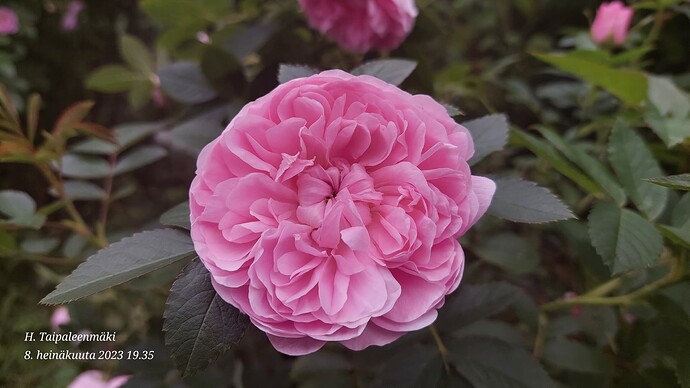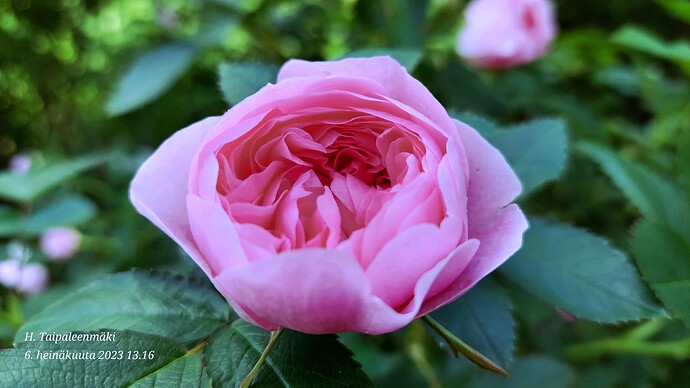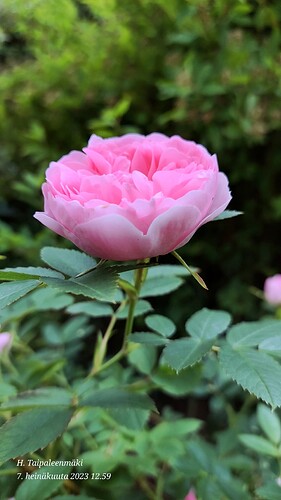Here is the largest Chinook Sunrise, white is an alba (semi plena) and red Hunter. Also include south bed’s John Cabots.
Below … the Chinook Sunrise was acquired as a 2 gallon pot.
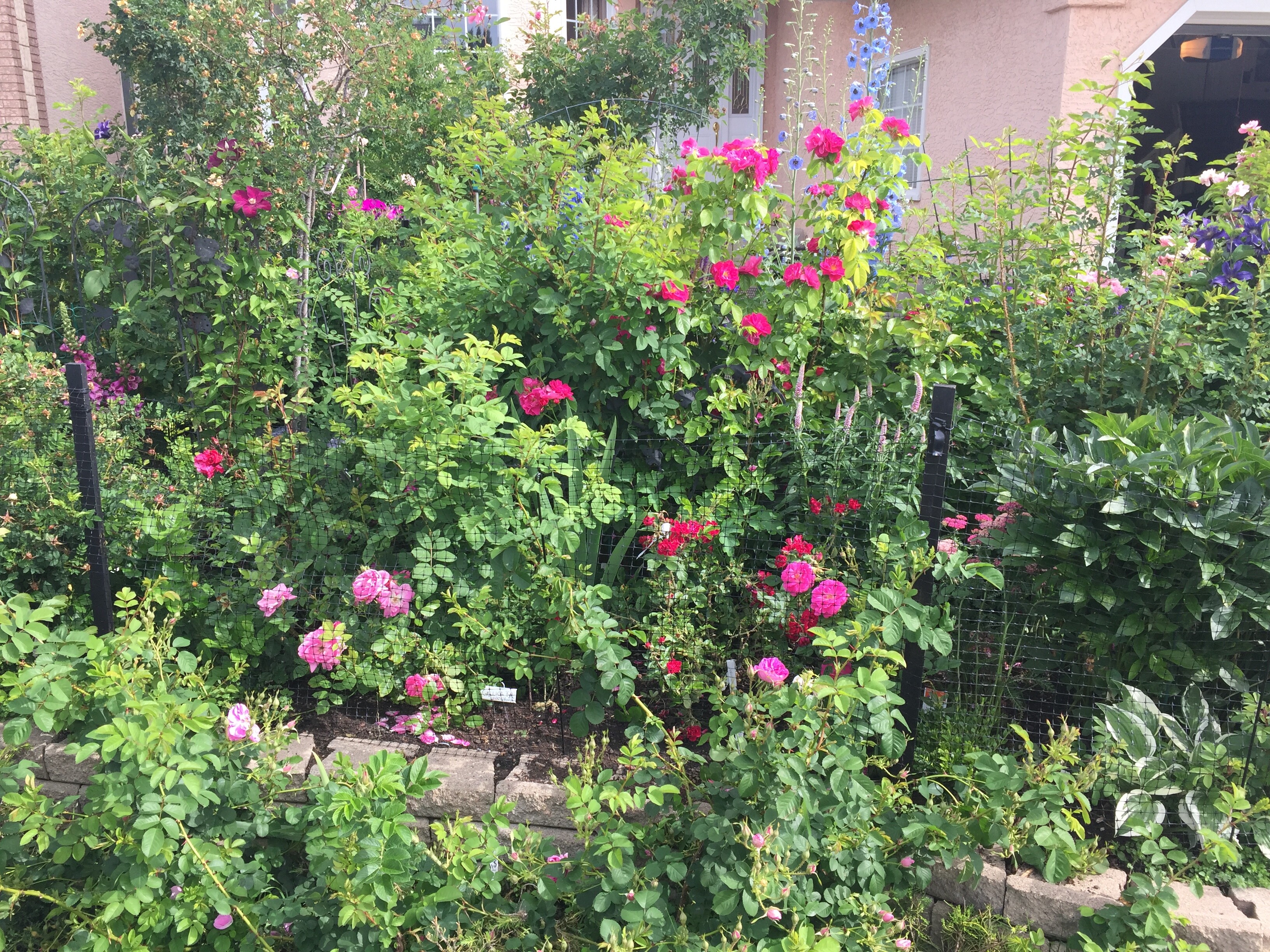
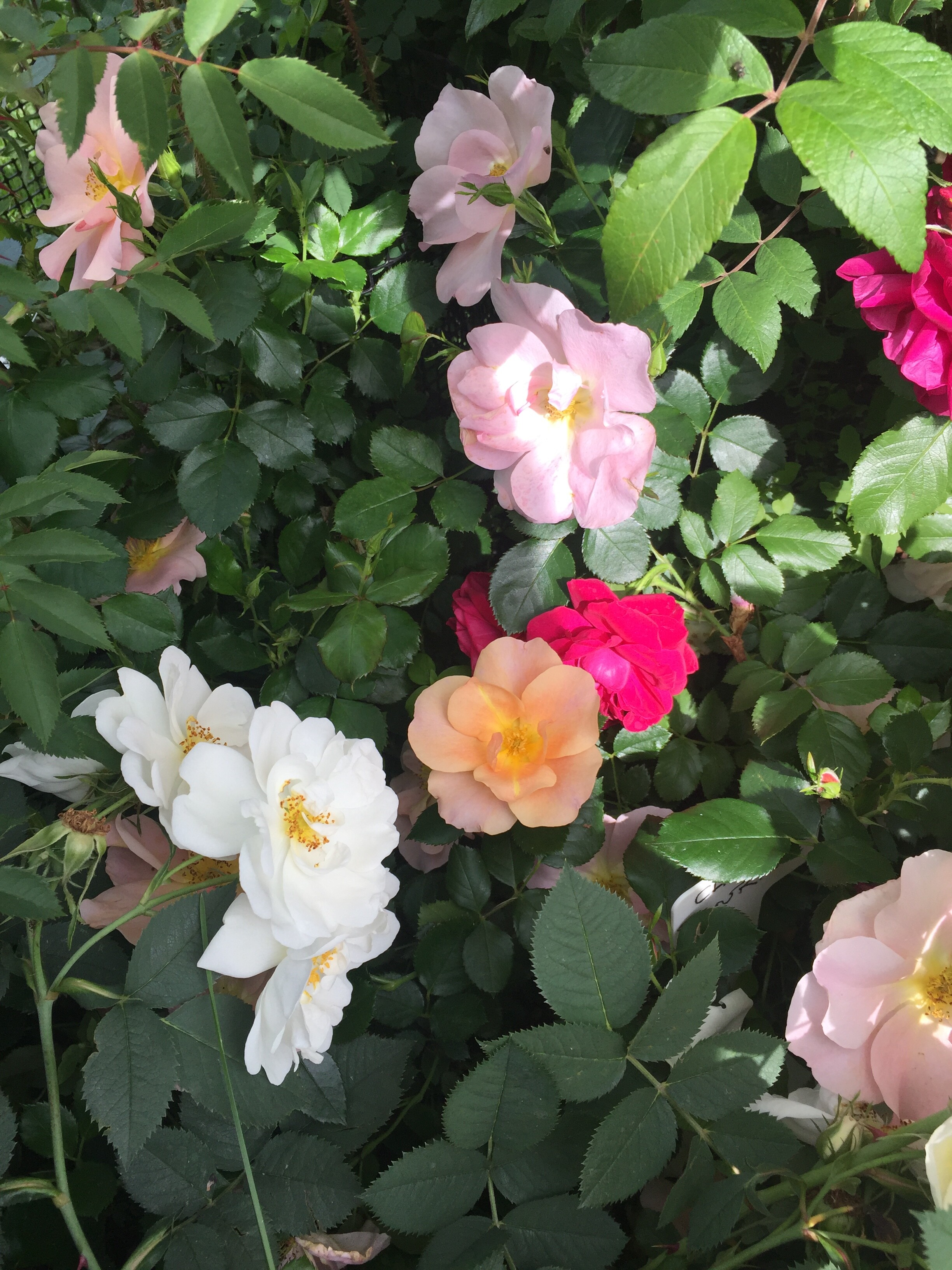
If you type in “Chinook Sunrise met its sunset” - you get a sub-artic polar blast opinion thread which is not wrong with respect to value of bloom color … even if colorful comments.
Dr Zleski ? (sic) says it is fertile pollen. There is good photo of the first bloom of Olds College first bloom (mine). Had to dig it out last winter and revive it … grew back well in shady spot under a cloche, but wont bloom until next year.
I have hips set using pollen from Chinook Sunrise. It has set hips also from pollen I placed on it. Not accepting all pollens, but not as particular as some. Setting nice fat hips. Time will tell if they make it to full ripeness, and also if seeds germinate. I will try extraction if they don’t germinate.
Duane
Thank you for the information. That Olds College rose is also available here in Finland. I also had Prairie Peace, which I lost because of the difficult last winter. Temperatures varied widely. There was no shelter from the snow and in February it was warm + 5-8 degrees Celsius and it rained. This was followed by another severe frost. The spring was long dry and windy. PP first started to grow and then it dried completely.
John Cabot seems to pass through the flowering recurrence gene quite easily, at least as a pollen parent.
In terms of winter hardiness, spinosissima roses are a sure choice. Have you used any blanda hybrids in your breeding work?
I got Jens Munk and Minisa last year. Minisa is Hansen’s rugosa hybrid Rosa rugosa Thunb. x Prince Camille de Rohan (hybrid perpetual). Jens Munk has buds, but Minisa didn’t seem to be blooming until next summer. Alba roses could also have potential if crossed with winter-hardy roses. Especially if you use Small Maiden’s Blush at crosses, which is a tetraploid according to Rolf Sievrs.
We have a lot of beautiful winter-hardy roses here in Finland. I hope you get as many of them as possible.
Helenae hybrids thrive only in the southern parts of Finland and require winter protection. Crossing them with hardier roses could produce winter-hardy offsprings.
Here, hares are a big problem. They eat almost all roses, even the most prickly ones.
What about Skinner’s Rambler? It is a R. maximowicziana hybrid. R. maximowicziana itself is hardy at least in zone 3b.
Link to Finnish Rose Society rose picture gallery https://ruususeura.ruususeura.fi/c-englanti/englanti-index.html
Oulu region winter and spring seem similar to southern Alberta Rocky foothills region - without the Baltic influence? - we get westerly Chinook warm winds anytime in winter where a plus 20deg. C change in middle of January is not unusual for a number of days. It can hit +5C to seen it go +15C - if l state higher one would think l was exaggerating. Other winters it can stay below -25C for daily average and below -30C night for 4 weeks without change - gone to Hawaii soon after those periods, need warm and green therapy - deserts wont do.
Snow cover can sometimes be non-existent - hence peat moss to stabilize temp… This tropical weather then followed by a big temperature crash to “normal”. This is where l started the dedicated rose growing. Lived also in northern Ontario, mid- north Edmonton, and a third place way up north in Alberta where -40C day time temp is not unheard of. l got my intro to explorer roses in that last place - tiny garden - over wintered and bloomed Northern Lights azalea there.
Blanda is in a number of my roses - tried crossing Hansen’s Lillian Gibson as its on the edge of hardy (lost one of 6 this year). Worth the effort because l used one in the test plot to fake a climber across main window as no real cane damage last year. Ranges from 6-8 feet and trellised - really good bloom. Use its bloom visual as an inspiration to get a true climber. It will not make seeds (no hips even selfies and op) for me. Not tried Betty Bland yet or Betty Will. My species blanda did not make it a long while back.
I am trying R. maximowicziana in the north garden this year as a Scandinavian import because Canada’s Pickering closed years ago. Saw an inspiring photo posted by “Jurrko” in HMF where it looks trellised up the side of a building. Looks to have gene potential.
Your having an influence as went out yesterday and pollenated Cabot with splendens and officinals.
My great experiment this year to pollinate with my blooming portland, centifolia and some hybrid perpetuals (been down this road before for growing) ran into a learning snag … sure difficult to find pollen. Attach a photo of them in the test bed. Name plant yerderosen is a Helenae hybrid in same bed.
Also photo of trellised Lillian Gibson.
Considered sacrificial donators - though they will be protected. They were the best out of major growing trial a decade back, for coming through winter in the north side gardens - though occansionally an hp/ portland will still pop up afrer a 10 year sleep to bloom like l believe sidonie is this year and a dark, non - huey red (were grafted on MF or dogrose) did a couple of years back. One id marker beside terrific bloom form and fragrance is the matte green leafs. Duchess of Portland still exists and a spreader, but has yet to re-bloom in 10 years. I am hoping more sun will trigger her to bloom since north gardens where severely affected last winter resulting in having to hard prune some giants (hardies and super hardiness).
Hansa and White Star of Finland went down to near zero to 4 feet. Hypothesize more due to old canes cumulative damage resulting in lower productivity and very very slow leafing up the canes, than a “hard” winter (it was not one in my opinion) - rejuvenating well and Hansa has already bloomed.
Some mosses grow in north garden for now close to decades, but blooming erratic like my cell phone spelling while having a coffee and cigar this morning, so l don’t use them- eg soupert et notting, blanche Moreau, Kern Moss (unknown origins by vendor), maracheal Dauost (sic, one of Napoleon’s field marshals) but blooms every year, one or two).
Todays goal, begin developing preliminary spring list. Do you know if Finnish rose society site is planning to give an English option - but keep Finnish roses names ? I have been very impressed with the “Finnish” education approach as my niece and her children write perfect English. More impressive because the below is a spelling memory and pronunciation challenge. l believe l grow the right one, a single yellow spino.
Porsliini Kaunota (Posliinikaunotar).
Kiitos
Riku
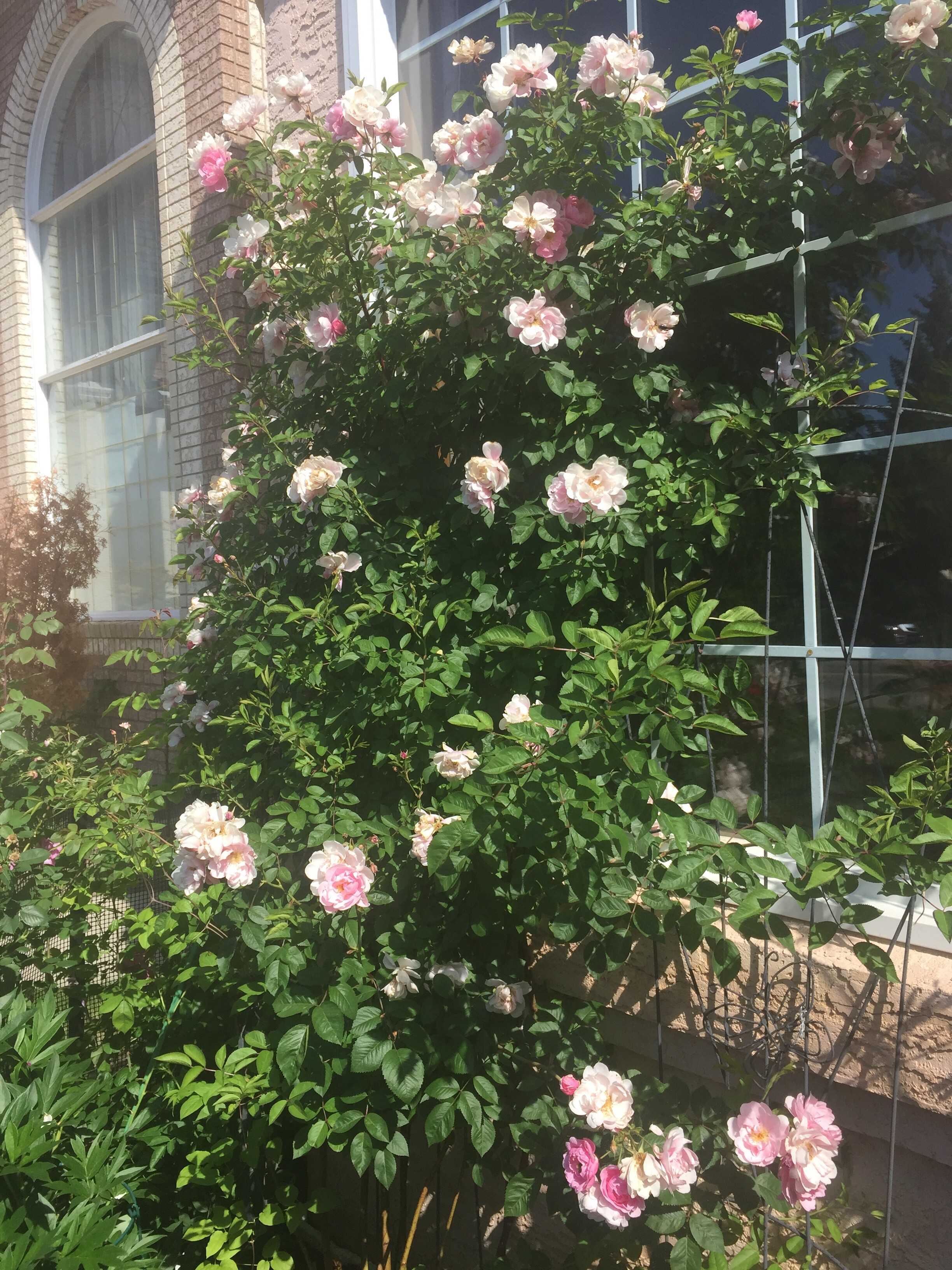

Ooops sorry, guess others shouldn’t be offended, this is second time I spelled “Jukka’s” name, wrong. Got Juhani (?) and Jouko named cousins in the family, so I forgive myself for bad memory spelling.
The FRS link has been very good reference so far and in the … going back for a check showed me it looks like another label mixed up because my Posliinikaunotar is not the same except, as a single yellow spino eventually fading to white. Do you if Skinners “Butterball” is there ? It stays a pretty solid yellow through the bloom and the passerby will comment on it.
Liked llo but not on available list that l can recognize - willing to gamble assuming Rosa x malyi Kempleen Kauntor is hardy to off set John Davis dislike of my garden.
Some of the more double spinos shown on site come close to another white spino-like Scandanavian import l can not identify - had labelled it as Ruskela ( long story) - not even close. This one does not open to reveal the “eye” - stamins and pistil etc . It is very double, so far hardy - would call it full bloom in reality. There is a thread with pictures l started to try and see if somebody knows of a close resemblance - no leads yet.
It is a “good looking” rose to my eye in early days but under study as first year it bloomed, so too early to give it a grading. But now showing signs of “balling” after overhead watering and high temperatures/ humidity (for here). Very large buds. Picture today of a bloom forced open due to balling of fine textured petals.

Many roses adapted to cold winters do not like varying temperatures. They come to life too early and they freeze and dry out.
Lilian Gibson is a triploid and it doesn’t make hips, but the pollen is fertile. LG is involved in the inheritance of the Campfire rose. I don’t have a Betty Bland, although it’s for sale here, but, I have an unidentified blanda hybrid called Herttoniemi. It is fertile in both directions. https://ruususeura.ruususeura.fi/a-suomi/a-loytoruusuja/herttoniemi.html
I haven’t used it in crossbreeds yet, but I thought about trying it out next year.
You meant Jukka Kallijärvi I guess. He also crosses roses and is a member of this forum. Jukka uses both winter-hardy and less winter-hardy roses in his work. He has already produced some interesting roses. A couple of roses he crossed can be found in the HMF database. 'Kallijarvi, Jukka' plant lists
Hopefully Cabot will produce a lot of interesting offspring for you.
The use of old roses at crosses is interesting. When mixed with both modern roses and species and species hybrids, you can successfully produce stunning roses with a beautiful flower shape, strong scent, good winter hardiness and a good shape and good disease resistance.
I’ve tried alba rose Minette, which is very hardy. Its seeds germinate poorly, but I have a couple of offspring growing from the cross between Minette and Above and Beyond. I did the pollination in July 2018 and the seeds germinated in May last year. David Zlesak has calculated Minette’s chromosomes and found it to be a diploid. I don’t know if it’s the same rose or not as the Minette here in Finland and Sweden? I need to test whether it accepts pollen from another diploid. https://ruususeura.ruususeura.fi/a-suomi/a-albat/minette.html
Rose enthusiast Michael Luther is updating the Rose Society website, so I need to ask him and give him a hint.
The Posliinikaunotar (Porcelain Beauty) is not yellow but almost white. The flowers of the Posliinikaunotar are slightly yellowish in the middle. Then comes the light pink zone and the edges are pale. The flowers turn white as they age.
https://ruususeura.ruususeura.fi/a-suomi/a-pimpinellifoliat/posliinikaunotar.html
Yellow single-flowered Finnish spinosissima roses are Maija Hesperia and Matti Hesperia. Then there is Kiiminki, which is pale yellow. Kiiminki is the most winter-hardy of these.
We don’t have a Butterball rose available, but I have the Beaty of Leafland, which is Butterball x Haidee.
There are several white semi-double and double spinosissimas. Those leaflets don’t look familiar to me. Would spinosissima (pimpinellifolia) pictures from this Danish Rosenpost nursery be helpful? Rosengrupper
We are very proud of our education, which is world class and free.
Regards Hannu
Is this article familiar to you? It’s about repeat-flowering spinosissimas
Great professional input, hybridizing experience advice, suggestions and growing information sharing like the RHA mission strives to meet.
Many thanks again. The first pass import list done of a truly impressive potential availability inventory. I had short listed and selected R. blanda Herttoneimi as another try yesterday. Plus new Finn roses, various Scandinavian not tried before and those lost for whatever reason and not due to climate. Along with too many others - lots of whittling down required. The final selection criteria is whether l believe they will make it in the back north garden climate for a major replant and add hybridizing potential stock, garden value and visual variety.
Glad to see some in our discussion suggestions on it - except a personal goal of R. Laxa, and specifically R. Laxa Retzius ( Isabelle Skinner parent ). Both are growing in a historical display garden as a hedge 1 hour away - and as singles - going to have to inquiry about acquiring. Been harvesting my one IS canes for cuttings for backup because plants as so rare - she is a little short this year as took 25 cuttings last year and only one took - the very tip. Finally threw a bloom last week from her stunted condition and lots of buds … why l target this rose hybridizing template as its robust, climber, light red and blooms until stopped by frost. Lost one large cane to winter and will show light powdery mildew. Some say gets BS but l don’t see it here and never an issue - with historical exceptions - in my garden.
Good rumour in Canada has IS being rooted for commerce by private enterprise. About time if true, as States had it available for a long time as Victorian Memory. However Butterball is not still commercially available.
Alberta’s Erskine’s hybridizing efforts are well represented in my gardens. Because they actually live though winter and for the majority have good to very good garden value - Beauty of Leafland tends to ball for me. Madeline’s Choice is a large rose in the north gardens, a nice large single mildly tinted apricot - and it might be a fluke, because not rampantly aggressive runner generator. But very large arching rose
- or no vacation if roses win.
The paper from 2018 is new to me, had read in the past another paper by Boyd before the repeaters were being offered, and one by an American way down south. Believe Henry or Karl provided the link. Remember attending a talk by Peter Beales way back at start of millennium to a Calgary HT audience. He suggested Pimpinefolias would do well here ![]() . That lad knew his roses and where they belonged - some in the audience paid attention got off the “not hardy semi hardy crown hardy” PR train quickly.
. That lad knew his roses and where they belonged - some in the audience paid attention got off the “not hardy semi hardy crown hardy” PR train quickly.
Today’s pollen donor will be my only surviving Austin in the test bed, Gertrude Jekyll nice bloom form and a fragrance hard to beat. Used it last year with RDxS and obtained seed but no germination. Still have trays outside but believe a bust.
However one try for a new hardy, disease resistant, fragrant and garden worthy rose does not make unless one is carrying a horseshoe.
And good luck to Michael on the updating and adding another language … some will find it valuable. Might explain also why some photos would not load on site yesterday.
Kiitos
Riku
Thank you too.
You’re going to have a lot of work to do to plant new roses, but that’s fun. I hope they thrive well and hopefully they are winter hardy and suitable for your crossbreeding work.
Saving old rose varieties from extinction is a cultural act. The KESKAS (hardy and beautiful plants) project was organized here in Finland in the 1980s. More than 700 tree and shrub stands were registered in the KESKAS project over five years. Some of the material was ready for direct addition and use, but much of it was variegated in origin, highly variable, and miscellaneous in nomenclature. Therefore, testing of plant material in comparators field trials proved necessary before plant propagation. During the project, a lot of old roses were found that were taken to the propagation.
The Finnish rose breeding project has some interesting roses that have never been taken for propagation and sale. One is L83 x Pikkalan Kaunotar. Pikkalan Kaunotar (The Beauty of Pikkala) is an unidentified centifolia rose (possibly gallica x centifolia). L83 x Pikkalan Kaunotar is winter-hardy here in the Oulu region. It blooms profusely every year.
Once again, good luck and success in rose breeding
Hannu
Pikkalan Kaunotar https://ruususeura.ruususeura.fi/a-suomi/a-loytoruusuja/pikkala2.html
[attachment=1]P. Joy_Oulu_Finland_2009-07-13 099.jpg[/attachment]
[attachment=0]P. Joy_Oulu_Finland_2009-07-13 101.jpg[/attachment]
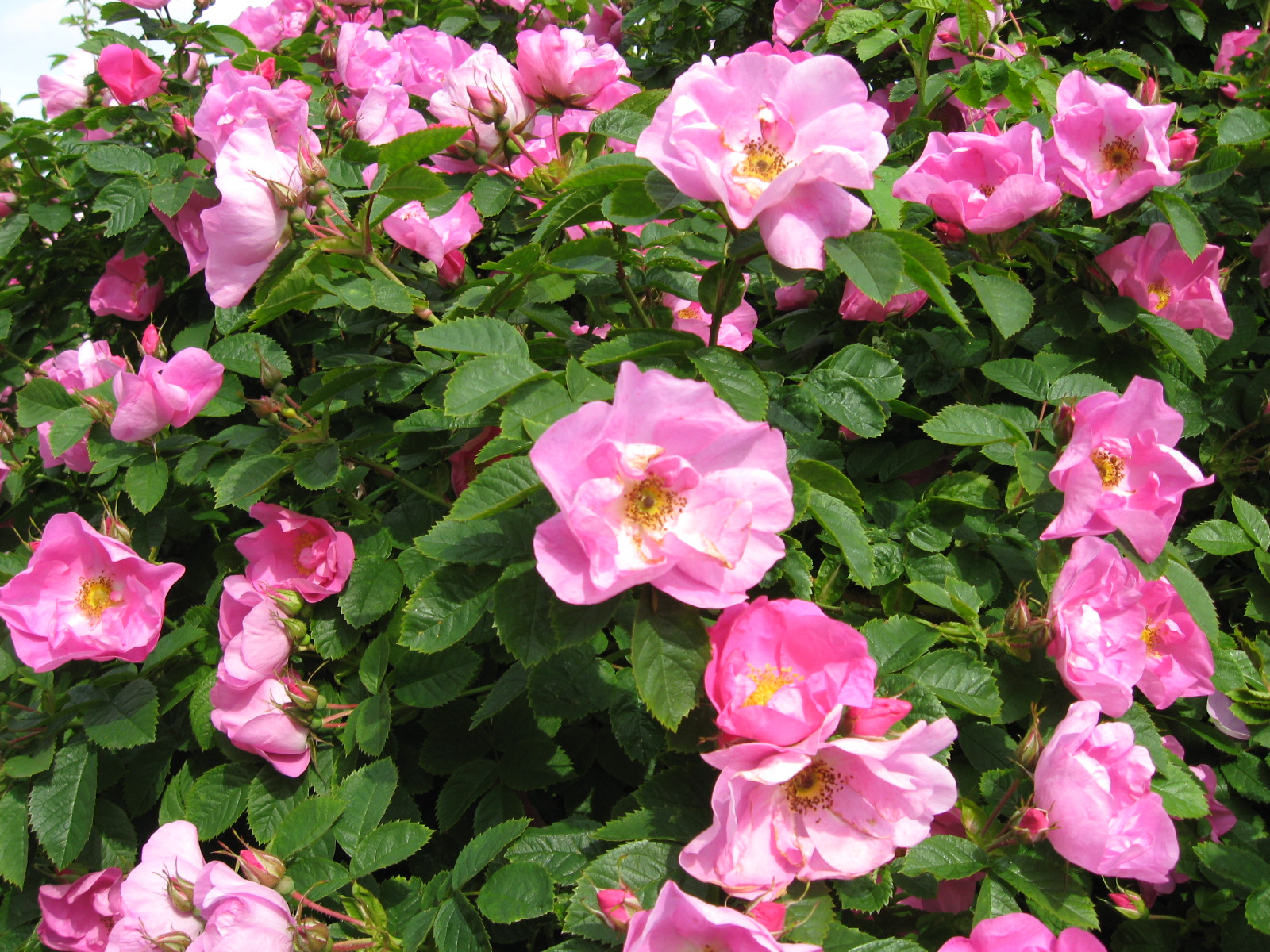
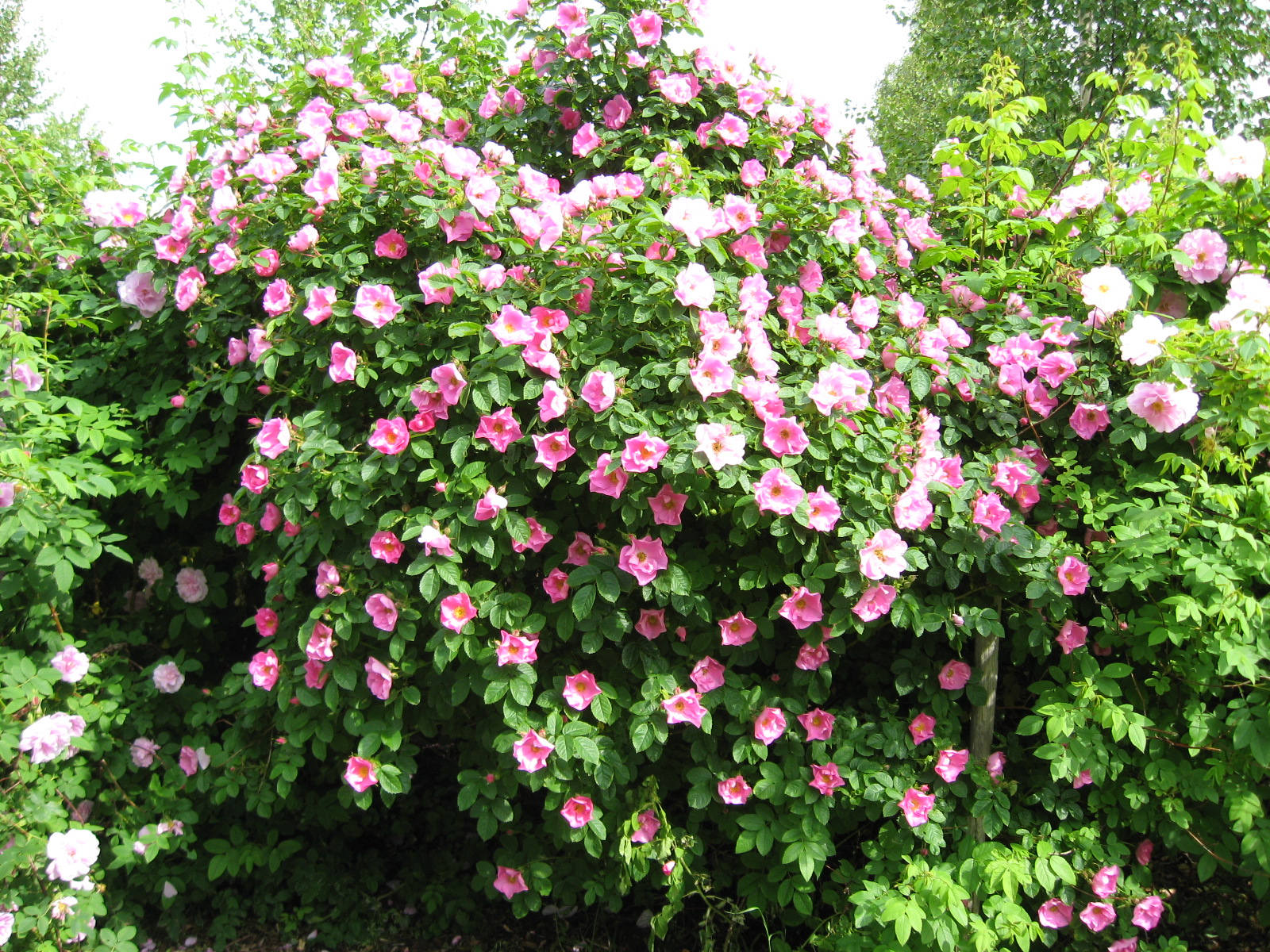
Thanks again,
Pikkalan Kaunota is interesting (actually exactly what I want in a hardy rose for bloom form).
I believe the cross with L83 puts Kordessi into the offspring … I am a reserved about any direct crosses with major contributions of R. kordessi genes for my climate. I fully recognize I maybe unfair to the Kordessi rose, and probably going against conventional wisdom, but I can not help being suspicious from my Explorer experience over 20 years, and others roses tried in my gardens. It may dilute the other parent hardy prairie hybrid genes - for the red ? and disease resistance - making the off-spring “semi-hardy” in my garden.
I am trying to stay away from it even though it is unknown whether Harp used it, or offspring, in 6910 (I will use 6910 for climbing trait and red). Its tenderness would make me question if it is in it (the identified other parent would never make it in the garden). Altaica would of already been diluted by Joana Hill, and I have no clue whats in RSM 6119
Though on the other side, it probably improved the hardiness of the other tender parent offspring in a separate crossings.
I attach my Madeline’s Choice photo taken at eye-level.
If the interrupted Finland visit goes ahead in the foreseeable, with Covid out of the way, I definitely need to see if Oulu can be made for “Flying semi-Finn” visit. Lots of relatives I want to visit in the areas of Helsinki, Heinlo, Lahti, Sysma and Rappala ![]() - some speak english. Remember awhile back reading about a nursery in Oulu when trying to find out from Canadian government if can import from Finland.
- some speak english. Remember awhile back reading about a nursery in Oulu when trying to find out from Canadian government if can import from Finland.
BTW a Canadian vendor was mentioning to me, he believes he is having success with rooting “pimpinefolia” cuttings with woody stem cutting rooting compound, and heat mats - calcifying. Still a work in progress.
Kittos Riku
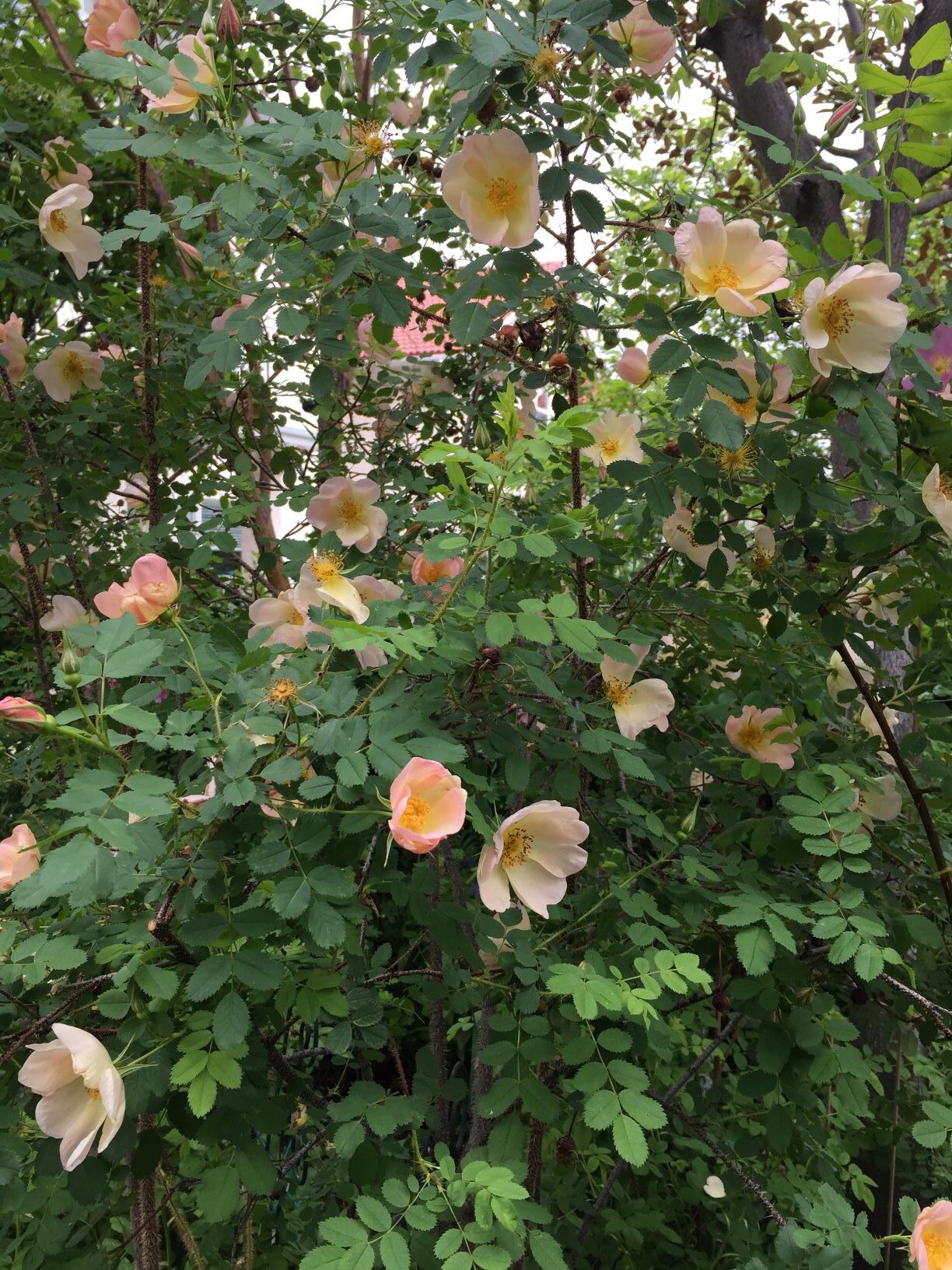
Solved the FRS translation road block by using Google translate, and does a good job and easy to use, now travel freely through the gallery and most of the site.
Hi, Riku
If the long term experience of something is bad, then you should leave it out of the plans. Then it is worth continuing on a line that has had positive results. You can sometimes try something new for the sake of interest and if others have good experiences with it.
Madeline’s Choice looks like a charming rose and presumably it is very winter hardy as it is a spinosissima hybrid.
Growing roses with their own roots is important, especially in cold climates. If the rose freezes down to the ground, the shrub will be able to grow new shoots. Many pimpinella- / spinosissima roses are difficult to add from cuttings. Matti Kulju from Oulujoen Taimisto nursery has a long experience in adding spinosissima roses from soft wood cuttings.
You will be in a hurry to meet all your relatives during your visit.
Here is a link to the Oulujoen Taimisto nursery website. They have a good selection of winter-hardy roses with their own roots. The nursery is located about 26 km southeast of Oulu.
Hi Hannu
Thanks for the nursery name and link. Went back again to CFIA and still can not get a positive hit on importing from Finland.
Agreed, pretty much a waste of time to ignore one’s growing experience telling one not to go down that road … and the wrong application of sisu. A goal of breeding a hardy red climber is the right application of perseverance. For me that means a starting point with the old successes as a template for one parent choice.
As you suggested, the R. blanda (Herttoniemi) as shown in all the link photos (especially the nursery) continues to be very interesting compared to what l know as blanda species. Mainly due to the semi - double form.
Definitely going to try to acquire … if it makes it through my winter it could be a third good breeding launch point like laxa and spinos species. Mainly due to higher petal count, crosses both ways, thornless? and basic hardiness potential. Could try and increase hardiness if weak through crossing in my garden.
Thanks again for the all the information and good lead lead to Herttoniemi.
The first photo is how l protect Officinalis and Splendens - planted within “ circled wagons” of wind breaking spinossisimas. Bloom just about done.
The second photo is the first non-wintered helenae hybrid to bloom, Lens Red Robin. The floret, almost Musk type of bloom, is absent in my gardens. The second helenae hybrid, Ydrerosen, likely tomorrow. The floret character l assume from “syns” parents in helenae.
If they stay short this year a good chance protection will work for 1st winter … after 1st on their own next winter.

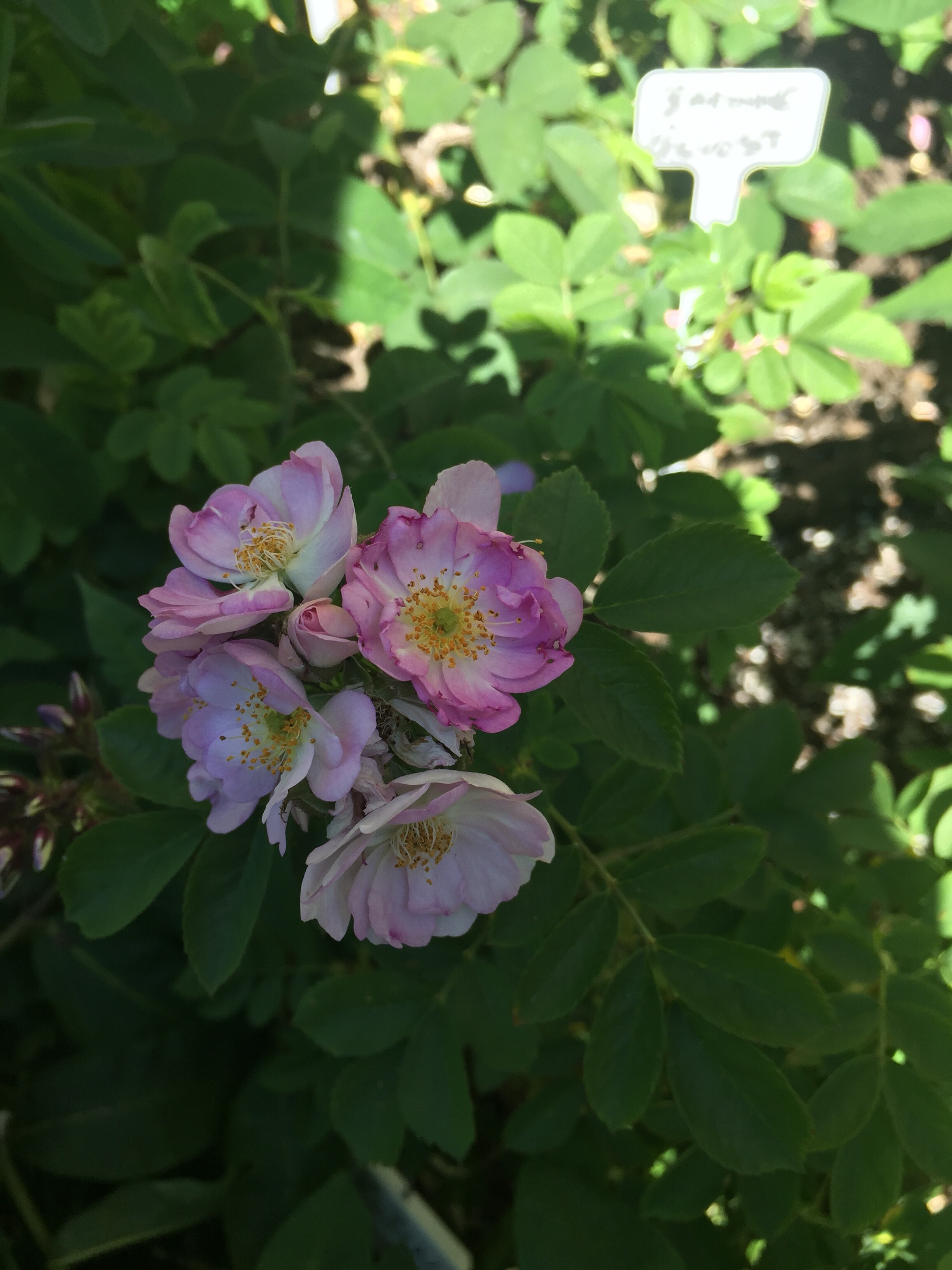
Here, helenae hybrids do not survive over the winter. I can only dream of them.
Many thanks for sharing this very interesting article!

